Can you get pine nuts from any pine tree? No, not all pine trees produce pine nuts that are edible. This is where the Pinyon Pine (Pinus edulis), a famous tree for these desired nuts stands out. Learn about various pine species, where they live, and the nuts or seeds they produce.
Pine nuts are a great source of protein and fat, as well as vitamins, minerals, and antioxidants. Read on to learn where to find, how to identify, and how to harvest this wild food for your survival.
Pine Nut Sources
You cannot get these tasty nuts from any pine tree. However, the Pinyon Pine (Pinus edulis), is a famous tree for these special nuts.
While there are around 120 species of pine trees, only a few produce nuts that are large enough and have a pleasant taste suitable for human consumption. The most common pine trees that produce edible pine nuts include:
| Pine Tree Species | Location | Pine Nuts |
| Pinus pinea (Stone Pine) | Mediterranean region | European pine nut – commonly used in Italian and Mediterranean cuisine. |
| Pinus koraiensis (Korean Pine) | Eastern Asia | Korean or Chinese pine nut – larger and have a higher fat content; popular in Asian dishes |
| Pinus edulis (Pinyon Pine) Pinus monophylla and Pinus cembroides (Single-leaf Pinyon and Mexican Pinyon) | Southwestern United States and Mexico | American pine nuts – smaller but known for their rich, buttery flavor |
| Pinus sibirica (Siberian Pine) | Siberia | Large pine nuts used in Russian cuisine |
You should learn how to accurately identify the pine tree species before attempting to harvest or consume its nuts, as some pine tree parts can be toxic.
Also, harvesting these is labor-intensive, and always be careful not to harm the trees when foraging them.
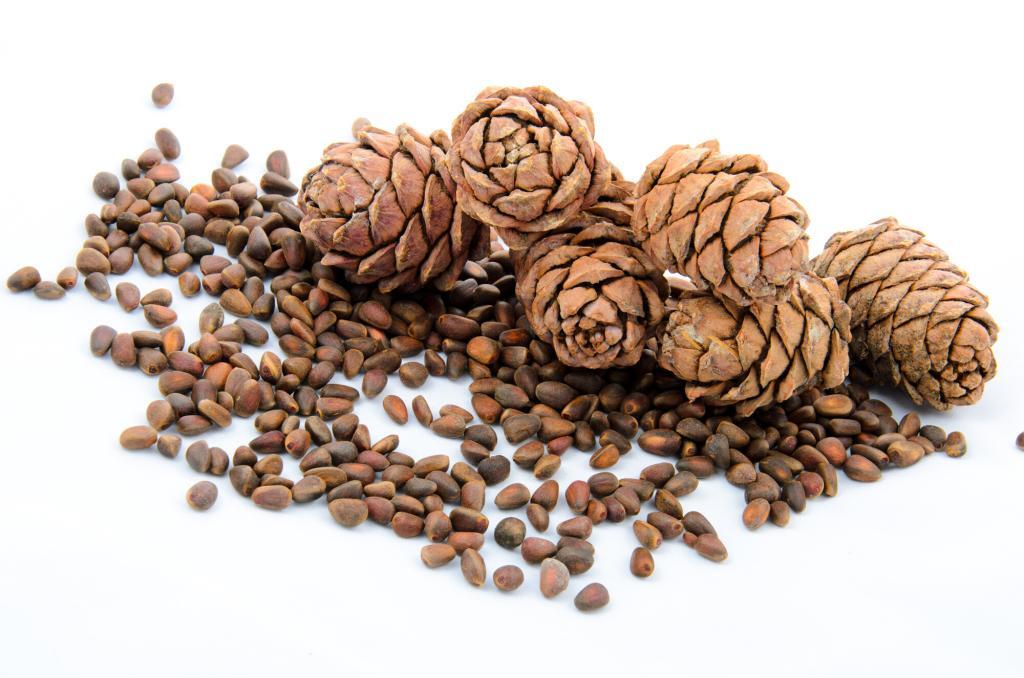
What Do Pine Nuts Look Like?
Pine nuts are small, elongated seeds that come from pine cones. Pine nuts are known for their unique taste, described as “buttery rich” with hints of pine and sweetness.
They have a light brown color and are enclosed in a hard outer shell. You can remove the edible kernel from the shell, which is creamy white to light beige and has a soft, slightly gritty feel.
Are Pine Nuts Edible?
Not all pine nuts are edible. And according to the UN Food and Agriculture, only 29 pine nuts come from edible species. There are a few additional species believed to be edible, but further research is needed to be sure.
The most common edible pine nut tree is the pinyon pine tree, native to the southwestern US. It produces the tasty and nutritious nut that many people enjoy.
Some other common species include the sugar pine, western white pine, and red pine.
Knowing how to properly identify different species before harvesting and consuming their nuts is essential to ensure a safe and enjoyable foraging experience.
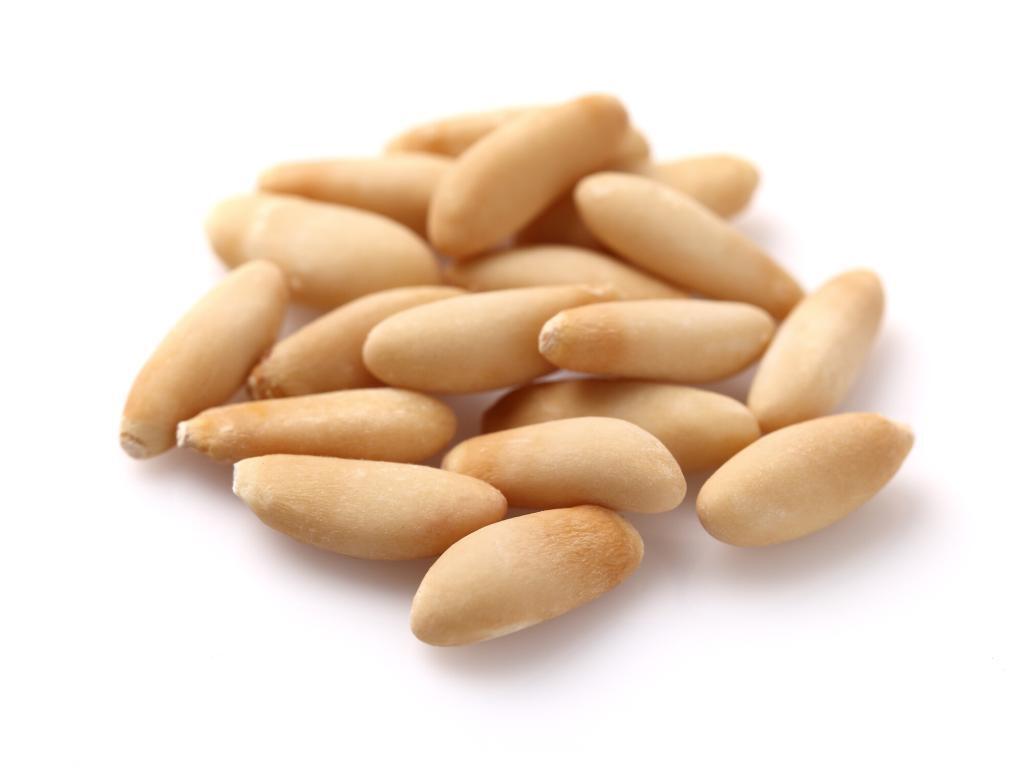
How Do I Find Pine Nuts?
Learn the crucial differences and the species like Pinus cembra that provide edible nuts.
To find pine nuts, follow these steps:
1. Identify the right species of pine tree
Familiarize yourself with the appearance and characteristics of pine trees to distinguish between species like Pinus edulis and Pinus monophylla in your region. Different species produce nuts that are edible for humans. Pinus koraiensis, for example, is known for its flavorful seeds.
You can read foraging books and field guides to help you identify safe and edible pine trees.
2. Look for mature trees
Mature trees often showcase a more extensive root system and a well-developed canopy, indicative of their ability to yield a more significant number of pine nuts.
These trees can take up to 25 years or longer to reach it’s optimum production of pine nuts. Meaning your harvest would be more plentiful depending on the maturity of the tree.
3. Examine the pine cones
Look for mature, closed pine cones on the tree or the ground beneath it. The cones from Pinus pinea are particularly known for containing an abundance of seeds. Ensure to gather those that are unopened for a successful harvest of pine nuts.

4. Check the ground
Fallen pine cones can be an indicator that the nuts are available. Examine the area for piles of cones under the tree, as this can be a sign that the tree is actively producing nuts, ready to be harvested and enjoyed.
5. Choose the right season
Pine nut harvesting typically occurs in late summer and early fall when the pine cones mature. Plan your foraging trips during this time to increase your chances of finding some of these tasty morsels.
How to Harvest Pine Nuts
Proper techniques and timing are important for a successful pine nut harvest. Here’s a step-by-step guide to help you out.
- Locate a pine tree with edible nuts.
- Collect mature pine cones from the tree or the ground below.
- Place the pine cones in a burlap sack or a similar breathable container.
- Allow the pine cones to dry in a warm, sunny spot for a week or two. So the cones will open easily and release the nuts.
- Shake the bag to separate the pine nuts from the cones.
- Remove the hard outer shells of the nuts using a nutcracker or a similar tool.
- Store the harvested pine nuts in an airtight container in a cool, dry place.
Harvesting Time of Pine Nuts
Generally, late August to October is the best time to harvest. Harvesting usually happens during the late summer and early fall months. This is when the pine cones have matured and are ready to release the seeds. Timing your harvest ensures the collection of fresh and edible pine nuts.
One way on how to find these nuts is by keeping an eye on the ground around the tree for fallen cones, as this can be a sign that it’s time to harvest. The exact timing may vary depending on the specific pine tree species and region.
How Many Pine Nuts Are In A Pine Cone?
A single pine cone can house numerous seeds, making the hunt worthwhile. On average, one pine cone can contain anywhere from 20 to 100 pine nuts.
Tree health, environmental conditions, and maturity can impact the number of nuts a pine cone produces. Not all pine cones will have the same number of nuts, even on the same tree.
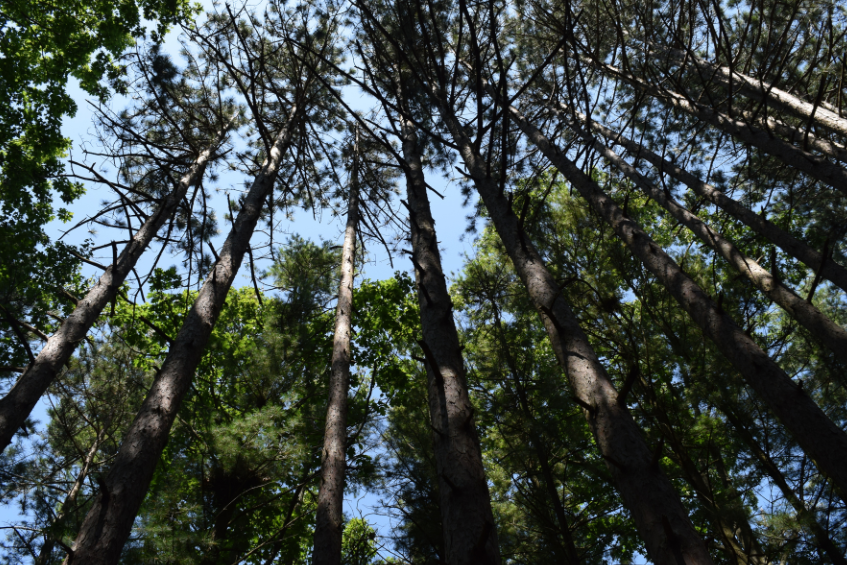
Pine Tree Toxicity
Certain species of pine trees are poisonous and you want to avoid ingesting their seeds or needles. Examples include the Araucaria heterophylla (Norfolk Island pine) with poisonous, highly concentrated seeds. These ar known to cause gastrointestinal issues and dermatitis.
Another example is the Yew tree (Taxus species), which is sometimes misidentified as a pine tree. It is very toxic, and all parts of the plant are dangerous, except the flesh of the berry around the seed. A very small dose of this poison can be deadly and she be avoided at all costs.
FAQ About Foraging Pine Nuts
How do I know what kind of pine tree I have?
Examine the needles, bark, and pine cones to identify the type of pine tree you have. Pinyon pines, for example, have short needles in bundles of two. They produce small to medium-sized, rounded cones.
Consulting a field guide or an expert in local flora can also help identify tree species.
H/T to @sacramentoriverecotours739 for this video: Harvesting Pine Nuts.
Is it safe to eat pine nuts raw?
Yes, it is safe to eat pine nuts raw as long as you know which ones are safe to consume. You can eat them raw, toasted, or cooked in various dishes. These raw nuts have a slightly sweet, nutty flavor and a soft, buttery texture.
Pine nuts can be used in various recipes. They can be used enjoyed as a delicious snack, blended up as pesto, or sprinkled on your favorite salad.
Are pine nuts nutritious?
Yes, pine nuts are nutritious. They contain omega-3s which are essential fatty acids to maintain a proper diet and boost your brain health.
In addition to the healthy fats, pine nuts contain protein and fiber which can assist in weight management by keeping you fuller for longer periods of time.
How do pine nuts grow?
Certain types of pine trees produce nuts inside their cones. After being pollinated by the wind, they mature into seeds within the female cones.
As the cones age, the nuts get embedded in the cone scales. When the cones are ready, they open up, letting the seeds or aka nuts fall out. After that, you may harvest the seeds.
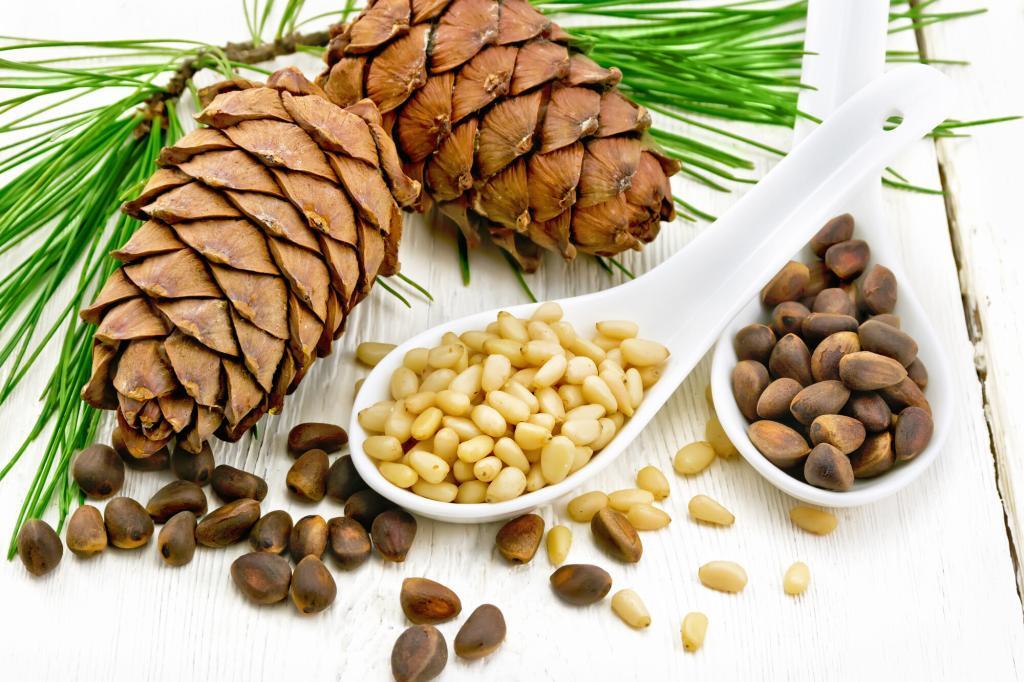
Wrap Up: Can You Get Pine Nuts From Any Pine Tree?
While not all pine trees produce edible nuts, the pinyon pine tree and a few other species yield tasty and nutritious nuts.
Foraging for nuts can be a fun and rewarding activity – especially in the wild. Now that you know which trees produce edible nuts, you can practice harvesting them safely.
Pro Tip: Before foraging for these nuts, be sure to know how to identify the correct pine tree species that are edible. You don’t want to get into a situation of consuming anything poisonous.
Pine nuts can be a bit pricey at store according to my wife. Foraging these tasty nuts can not only save you some money, but possibly save you from starvation.
ABOUT THE AUTHOR
Bill Montgomery is the co-founder of Modern Day Prepping. He and his wife Angie have been dedicated to the self-reliant lifestyle since 2008. When he’s not working on the homestead, he enjoys tinkering with electronics and family movie nights with Angie and their two boys. To learn more about Bill, visit the About Us page.
If you want to know how to keep your family safe in the modern world, visit Privacy For Patriots, a sister site that Bill started to help fellow Patriots stay "off the radar" from bad actors and big tech.

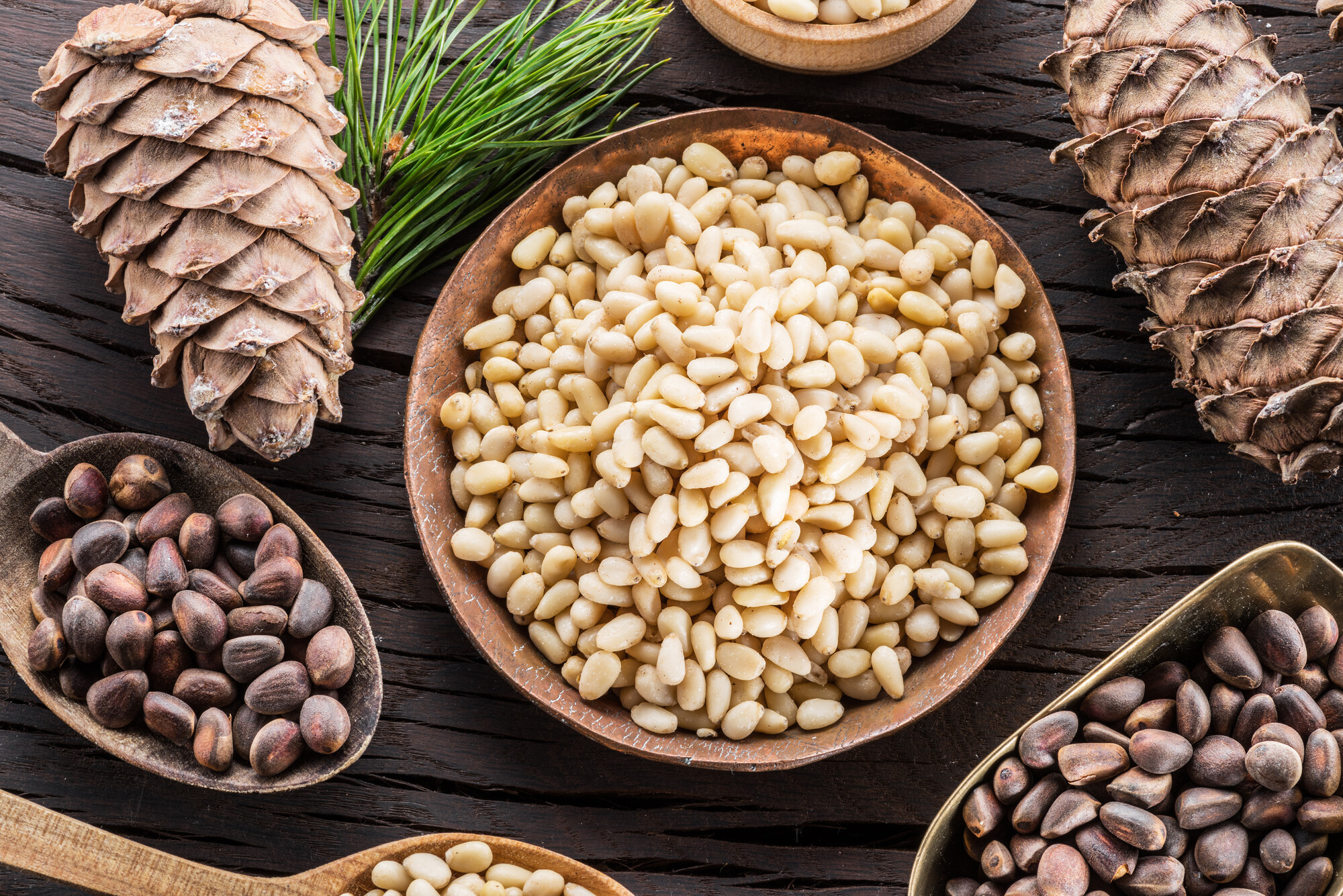
0 Comments